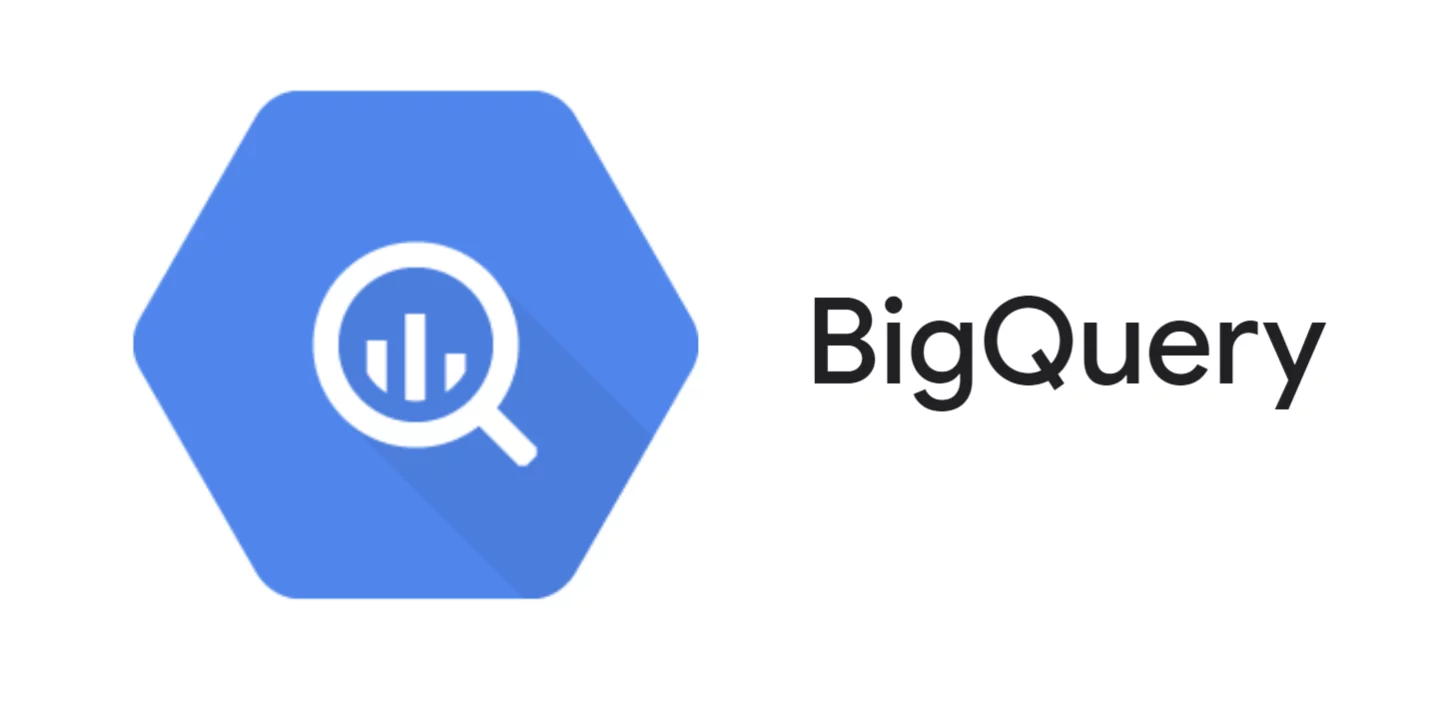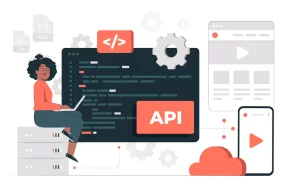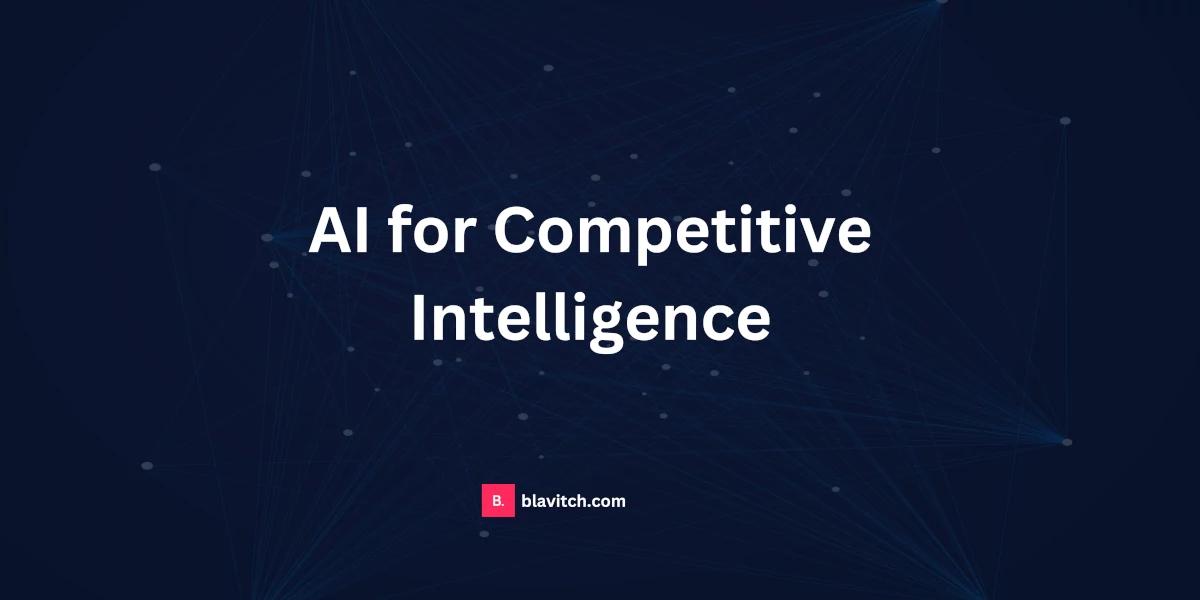- Home
- Technology
- What is BigQuery?

So, what exactly is BigQuery? Simply put, it’s a fully managed, data warehouse that packs a punch. Developed to meet the demands of modern data-driven industries, BigQuery is a game-changer for businesses seeking insights from their vast amounts of data.
Google Cloud Platform (GCP) is the home of BigQuery, where it integrates seamlessly with a host of other powerful tools. With BigQuery, you can analyze massive datasets with blazing speed and flexibility using SQL queries – no need to worry about managing servers!
The core of BigQuery’s brilliance lies in its key features and capabilities. Enjoy unparalleled scalability and performance as you work with colossal amounts of data. Embrace the efficiency of columnar data storage, and master the art of advanced querying using familiar SQL syntax.
But that’s not all! BigQuery also plays nice with machine learning tools, allowing you to take your data exploration to a whole new level. Plus, with robust data security and access controls, your information stays safe and sound.
Understanding BigQuery’s Core Functionality
BigQuery is a data wizard, and understanding its core functionality is the key to unleashing its power. This fully-managed, serverless data warehouse takes the heavy lifting out of data management and analysis. Let’s explore how it works!
At the heart of it all, BigQuery is designed to seamlessly integrate with the Google Cloud Platform (GCP). With this dynamic duo, you can bid farewell to the complexities of managing servers and instead focus on extracting valuable insights from your data.
What sets BigQuery apart are its remarkable features and capabilities. Brace yourself for jaw-dropping scalability and lightning-fast performance as you tackle immense datasets effortlessly. Say hello to columnar data storage, where efficiency and compression reign supreme, optimizing your storage needs.
But wait, there’s more! BigQuery’s real charm lies in its user-friendly SQL interface. Gone are the days of wrestling with unfamiliar query languages – now you can craft powerful queries using plain old SQL, making data exploration a breeze.
And the excitement doesn’t end there. BigQuery loves playing nice with machine learning tools. By harnessing the might of BigQuery ML, you can train and predict models right within the platform. Embrace the magic of machine learning without ever leaving the comfort of BigQuery.
Data security is paramount, and BigQuery knows that. With robust access controls and data encryption, your information is safe and sound, giving you peace of mind as you traverse the data landscape.
How Does BigQuery Work?
Curious about the inner workings of BigQuery? Let’s unveil the magic behind this data powerhouse. As we delve into how BigQuery operates, you’ll gain a deeper understanding of its data ingestion, storage process, and more.
Data ingestion is the gateway to BigQuery’s data paradise. It starts by loading your datasets into the system. Once your data finds its home in BigQuery, it’s stored efficiently in a structured format that sets the stage for seamless analysis.
Say hello to Datasets, Tables, and Schema – the building blocks of BigQuery’s organized data universe. Datasets act as containers, holding related tables and giving structure to your data. Within datasets, tables hold the actual data, neatly arranged for easy access.
Data partitioning and clustering work hand in hand to optimize performance. Partitioning divides your data into manageable chunks, making queries faster and reducing costs. Clustering further enhances efficiency by organizing data within partitions, honing in on relevant subsets.
As you dive into the world of data analysis, you’ll become familiar with slots – the currency of processing power in BigQuery. The number of slots you use impacts the speed and efficiency of your queries. BigQuery lets you choose the slot allocation that best suits your needs.
With the gears of BigQuery set in motion, you can now leverage SQL to unearth valuable insights from your data. By crafting SQL queries, you can explore, analyze, and visualize data in ways that were once reserved for data wizards.
And that’s not all! BigQuery embraces the beauty of real-time data. Thanks to seamless integration with streaming data sources like Apache Kafka and Cloud Pub/Sub, you can process data as it arrives, keeping your analyses up-to-date and on point.
BigQuery’s inner workings are designed to optimize your data journey. From data ingestion to SQL querying, from slots to real-time analytics – BigQuery provides an ecosystem that empowers you to make the most of your data. So, let’s embark on a data-driven adventure with BigQuery as our guide!
Common Use Cases of BigQuery
BigQuery’s versatility shines through its wide range of applications. Let’s explore some of the most common and impactful use cases where BigQuery proves to be a game-changer.
A. Business Intelligence and Data Analysis
- Analyzing Large Datasets for Insights: BigQuery’s lightning-fast performance allows businesses to analyze vast amounts of data quickly, gaining valuable insights into customer behavior, market trends, and operational efficiency.
- Creating Data Visualizations and Dashboards: With data at your fingertips, you can effortlessly create stunning visualizations and interactive dashboards using tools like Data Studio, empowering stakeholders to understand data better.
- Enabling Data-Driven Decision-Making: By harnessing BigQuery’s analytical prowess, organizations can make well-informed decisions backed by data, leading to improved business strategies and enhanced productivity.
B. Real-Time Data Analytics
- Processing Streaming Data with BigQuery: With its ability to handle real-time data streams, BigQuery opens the door to analyzing constantly changing data, such as website clickstreams or IoT sensor data, enabling real-time insights and reactions.
- Integrating with Tools like Apache Kafka and Cloud Pub/Sub: BigQuery integrates seamlessly with popular streaming platforms, allowing you to ingest, process, and analyze high-velocity data streams without breaking a sweat.
C. Predictive Analytics and Machine Learning
- Utilizing BigQuery ML for Model Training and Prediction: BigQuery ML allows data scientists and analysts to build and train machine learning models using SQL, eliminating the need for complex data transfers and integrations.
- Integrating with TensorFlow and Other ML Libraries: By integrating with popular machine learning libraries like TensorFlow, BigQuery empowers data teams to harness the full potential of machine learning on massive datasets.
D. Log Analysis and Monitoring
- Monitoring Application Logs: BigQuery can be used to store and analyze logs generated by applications, providing invaluable insights into application performance, errors, and usage patterns.
- Identifying Patterns and Anomalies for Troubleshooting: With its powerful querying capabilities, BigQuery assists in identifying patterns and anomalies within logs, enabling efficient troubleshooting and issue resolution.
E. Internet of Things (IoT) Data Analytics
- Handling Massive Volumes of IoT-Generated Data: As the IoT ecosystem expands, BigQuery proves to be the ideal solution to manage and analyze the massive volumes of data generated by interconnected devices.
- Extracting Valuable Insights from Sensor Data: By processing and analyzing IoT sensor data in real time, businesses can optimize processes, predict maintenance needs, and deliver enhanced customer experiences.
BigQuery’s diverse use cases highlight its adaptability across industries and data scenarios. Whether it’s empowering data-driven decisions, processing real-time streams, unlocking the potential of machine learning, or diving deep into log analytics and IoT data – BigQuery is your go-to tool for transforming raw data into actionable intelligence.
Case Studies: Real-World Examples
Let’s dive into real-world case studies that showcase how BigQuery has revolutionized data analytics and empowered businesses to achieve outstanding results. These success stories demonstrate the true power of BigQuery across different industries and use cases.
A. Case Study 1: E-commerce Giant
- Handling Peak Holiday Season Traffic: An e-commerce giant faced the challenge of handling a massive surge in website traffic during peak holiday seasons. By leveraging BigQuery’s scalability and performance, they managed to process and analyze a vast amount of transactional data in real-time, ensuring a seamless shopping experience for millions of customers.
- Personalized Product Recommendations: Utilizing BigQuery’s machine learning capabilities, the e-commerce company built personalized product recommendation models based on customer behavior and preferences. This led to a significant increase in conversion rates and customer satisfaction.
B. Case Study 2: Healthcare Institution
- Analyzing Patient Data for Medical Research: A leading healthcare institution utilized BigQuery to analyze and process large-scale patient data, including electronic health records and medical imaging data. BigQuery’s speed and scalability enabled researchers to identify patterns and correlations that led to groundbreaking medical discoveries and advancements.
- Predictive Analytics for Early Disease Detection: By combining BigQuery with machine learning algorithms, the healthcare institution developed predictive models for early disease detection. These models allowed them to proactively identify patients at risk, leading to improved patient outcomes and reduced healthcare costs.
C. Case Study 3: Gaming Studio
- Real-Time Analytics for Multiplayer Games: A gaming studio integrated BigQuery with their multiplayer gaming platform to capture and analyze real-time player interactions, game events, and performance metrics. This data-driven approach enabled them to optimize game balance and deliver a seamless gaming experience.
- Player Behavior Analysis for Game Improvements: Leveraging BigQuery’s data analysis capabilities, the gaming studio gained deep insights into player behavior and preferences. Armed with this knowledge, they made data-backed decisions on game design, updates, and features, leading to increased player engagement and retention.
These case studies demonstrate the transformative impact of BigQuery across various industries. From handling massive holiday traffic to improving healthcare outcomes and enhancing gaming experiences, BigQuery proves to be a powerful ally in extracting valuable insights from data and driving positive business outcomes.
Getting Started with BigQuery
Ready to harness the potential of BigQuery? Let’s embark on a journey to get you started with this powerful data tool. From setting up your Google Cloud account to writing your first SQL query, we’ve got you covered!
A. Setting up a Google Cloud Account
- Creating Your Google Cloud Platform (GCP) Account: If you don’t have a GCP account, we’ll guide you through the simple steps to create one. It’s your gateway to accessing BigQuery and a host of other powerful GCP tools.
- Enabling BigQuery API: Once you have your GCP account set up, we’ll show you how to enable the BigQuery API, granting you access to all the wonders of BigQuery.
B. Creating and Managing Datasets and Tables
- Setting up Your First Dataset: Learn how to create a dataset in BigQuery, a container for organizing your data. We’ll walk you through the process and best practices for structuring your datasets.
- Creating Tables and Defining Schemas: With your dataset ready, it’s time to create tables and define their schemas. We’ll show you how to specify the data types, ensuring your data is well-organized for efficient querying.
C. Loading Data into BigQuery
- Uploading Data from Local Files: Whether it’s CSV, JSON, or other formats, we’ll guide you through the steps to upload data from your local files into BigQuery.
- Streaming Data into BigQuery: For real-time data ingestion, we’ll demonstrate how to stream data into BigQuery using integration with Cloud Pub/Sub or other streaming platforms.
D. Writing SQL Queries for Data Analysis
- Introduction to SQL in BigQuery: If you’re new to SQL, fear not! We’ll provide a beginner-friendly introduction to writing SQL queries in BigQuery, covering essential SELECT, JOIN, and WHERE clauses.
- Performing Aggregations and Grouping Data: Learn how to use GROUP BY and aggregate functions to summarize and group your data, giving you powerful insights at a higher level.
E. Query Optimization and Performance Tuning
- Understanding Query Execution Plans: Explore how BigQuery executes your queries and learn how to interpret query execution plans to optimize their performance.
- Best Practices for Query Optimization: Discover effective tips and tricks to optimize your queries, reduce costs, and speed up data processing.
F. Cost Management and Controlling Query Expenses
- Estimating Query Costs: We’ll show you how to estimate the cost of running queries in BigQuery, allowing you to plan and budget accordingly.
- Setting Up Budgets and Alerts: Learn how to set up cost controls, budgets, and alerts to manage your expenses and prevent unexpected billing surprises.
G. Data Security and Compliance Considerations
- Controlling Access and Permissions: BigQuery provides robust access controls, and we’ll guide you through granting the right permissions to users and groups.
- Data Encryption and Compliance: Explore BigQuery’s data encryption features and how they align with industry regulations and compliance standards.
Get ready to embrace the data-driven world with BigQuery as your ally. From setting up your GCP account to mastering SQL queries and ensuring data security, this guide will equip you with the knowledge you need to unlock the full potential of BigQuery for your data analytics journey. Let’s dive in!
Best Practices for Using BigQuery
To make the most of BigQuery’s capabilities and ensure optimal performance, it’s essential to follow best practices. In this section, we’ll cover a range of recommendations and tips to maximize your BigQuery experience.
A. Data Optimization and Schema Design
- Choosing the Right Data Types: Selecting appropriate data types for your columns can significantly impact storage efficiency and query performance. We’ll guide you in making informed decisions when defining your schema.
- Partitioning Strategies: Understand the various partitioning techniques in BigQuery and how to choose the right partitioning scheme for your data, leading to faster and cost-effective queries.
- Clustering for Improved Query Performance: Learn how to use clustering to organize your data within partitions, resulting in reduced data scanning and faster queries.
B. Query Optimization and Performance Tuning
- Filtering and Pushing Down Predicates: Discover how to leverage filtering and predicate pushdown techniques to minimize the amount of data scanned and improve query efficiency.
- Using Cache and Query Results: Understand how BigQuery’s caching mechanism works and how to utilize cached results to speed up frequently executed queries.
- Optimizing JOINs and Subqueries: Master the art of optimizing JOIN operations and subqueries to avoid performance bottlenecks and enhance query execution.
C. Cost Management and Controlling Query Expenses
- Understanding Billing and Pricing Models: Gain insights into BigQuery’s billing structure and pricing models, allowing you to optimize your usage and control costs.
- Avoiding Data Scans with Preview and Dry Run: Use preview and dry run options to estimate query costs and identify potential cost-saving opportunities before executing resource-intensive queries.
- Querying Specific Columns with SELECT *: Discover how to avoid unnecessary data scans by selecting specific columns rather than using SELECT * in your queries.
D. Data Security and Compliance Considerations
- Managing Access Controls and Roles: Implement fine-grained access controls by defining roles and permissions to restrict data access to authorized users.
- Data Encryption and Key Management: Ensure data security by understanding BigQuery’s encryption capabilities and managing encryption keys appropriately.
- Compliance with Industry Regulations: Learn how BigQuery supports compliance with industry standards, such as HIPAA and GDPR, to meet your organization’s regulatory requirements.
Following these best practices will not only optimize your BigQuery performance but also enhance data security and cost-effectiveness. By mastering the art of data optimization, query tuning, and cost management, you’ll be able to unlock BigQuery’s full potential and make data-driven decisions with confidence. Let’s embark on a journey to become BigQuery experts!
Future Trends and Advancements
BigQuery is continually evolving to meet the ever-changing needs of the data analytics landscape. In this section, we’ll explore some exciting future trends and advancements that are shaping the future of BigQuery.
A. Google’s Ongoing Developments for BigQuery
- Enhanced Performance and Scalability: Google continues to invest in optimizing BigQuery’s performance and scalability, allowing users to process even larger datasets at lightning speed.
- Expanded Integration with GCP Services: Expect to see tighter integrations between BigQuery and other GCP services, enabling seamless data flow and analysis across the entire Google Cloud ecosystem.
B. Integrating BigQuery with Emerging Technologies
- BigQuery and Blockchain Technology: As blockchain gains prominence in various industries, expect to see innovative use cases that combine BigQuery’s analytical capabilities with blockchain’s distributed and secure ledger technology.
- AI and Machine Learning Advancements: Google’s ongoing advancements in artificial intelligence and machine learning will likely lead to further integration with BigQuery, enabling more sophisticated AI-driven data analysis.
C. BigQuery’s Impact on the Data Analytics Landscape
- Democratizing Data Analytics: With its user-friendly interface and powerful querying abilities, BigQuery is playing a significant role in democratizing data analytics, making data insights accessible to users with diverse skill sets.
- Real-Time Analytics Becoming the Norm: BigQuery’s real-time data processing capabilities are driving a shift towards real-time analytics becoming the norm across industries, empowering businesses to make immediate data-driven decisions.
- Data Monetization Opportunities: As organizations recognize the value of their data, BigQuery’s ability to process vast datasets and extract insights opens up new opportunities for data monetization, where data becomes a valuable asset.
D. Advancements in Data Security and Compliance
- Enhanced Data Encryption Techniques: With growing data privacy concerns, BigQuery will likely see advancements in data encryption techniques to bolster security measures and protect sensitive information.
- Compliance with Evolving Regulations: BigQuery will continue to align with evolving data privacy and compliance regulations, ensuring that organizations can confidently manage data while meeting their legal obligations.
BigQuery’s future is brimming with possibilities, and these emerging trends and advancements will shape the data analytics landscape for years to come. As BigQuery remains at the forefront of innovation, businesses and data professionals can look forward to unlocking even greater potential and gaining deeper insights from their data. The future of data analytics is bright, and BigQuery will be leading the way.
Conclusion
As we come to the end of our journey exploring the world of BigQuery, it’s clear that this powerful data tool has transformed the way we analyze and leverage data. Let’s recap the significance of BigQuery and the impact it can have on data-driven decision-making.
A. BigQuery’s Significance in Data-Driven Decision-Making
BigQuery’s exceptional performance, scalability, and ease of use make it a go-to solution for businesses seeking data-driven insights. By analyzing massive datasets with lightning speed, organizations can make informed decisions quickly, gaining a competitive edge in today’s fast-paced world.
B. Encouragement to Explore BigQuery for Data Analytics
If you haven’t already, we encourage you to dive into BigQuery and experience its capabilities firsthand. Whether you’re a business analyst, data scientist, or decision-maker, BigQuery’s user-friendly interface, and powerful features will empower you to harness the full potential of your data.
C. Final Thoughts on the Future of Data Analytics and BigQuery’s Role
As data continues to drive innovation, BigQuery’s role in the data analytics landscape is set to expand further. With ongoing advancements in performance, integration with emerging technologies, and a focus on data security, BigQuery is poised to play a crucial role in shaping the future of data analytics.
BigQuery has already demonstrated its value across various industries and use cases, and its journey is only just beginning. As it continues to evolve, the possibilities for unlocking insights, driving innovation, and making data-informed decisions are limitless.
So, whether you’re a small startup or a global enterprise, take the leap and explore the world of BigQuery. Embrace the power of data analytics and let BigQuery be your guide on your data-driven adventure.







